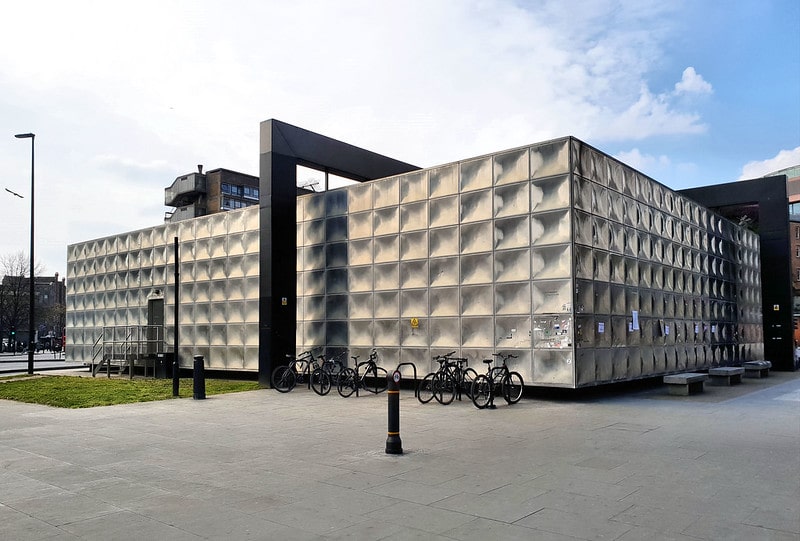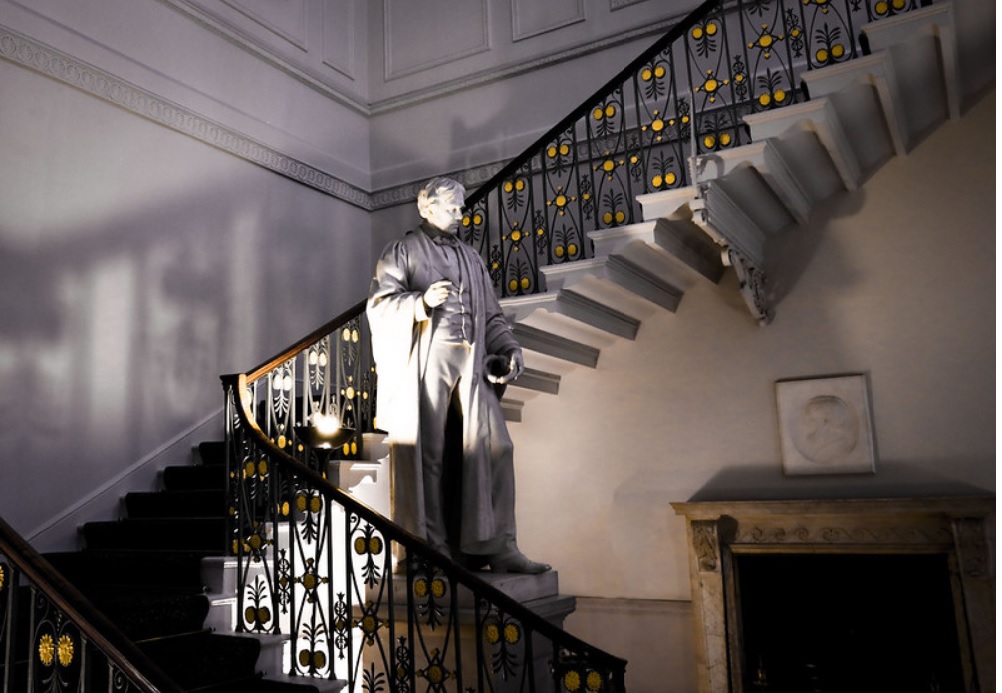Last updated on April 1st, 2023
Michael Faraday is widely recognized for discovering electromagnetism, but his work did so much more to increase our knowledge of science. As an inventor and a pioneer in both the chemistry and physics fields, Faraday greatly expanded our understanding of both electricity and electrochemistry. He made up for his lack of formal education through perseverance and intrigue. All of his discoveries and creations resulted from experiments rather than direct knowledge. Here are 50 facts about Michael Faraday.
1. Michael Faraday’s zodiac sign was the Virgo. He was born in London on September 22 of 1791, making him the third child out of four.
2. Faraday’s mother had been a servant before she married his father. Unfortunately, she would remain poor for her entire life.
3. His father, James Faraday, worked as a blacksmith. He was often ill and had trouble supporting his four children and wife. Conditions were so bad that Faraday claimed he once had to make a single loaf of bread last for an entire week.
4. By the age of 13, Faraday was pulled out of school and put to work as an errand boy in an effort to bring in more money for the family and help his father pay the bills.

5. The following year, a bookseller by the name of George Ribeau offered Faraday an apprenticeship in his shop. Over the next seven years, Faraday became an expert at bookbinding.
6. Since he had very limited schooling, Faraday took advantage of his apprenticeship. He would stay late most of the time, just so he could read through the books he had bound that day.
7. Two of Faraday’s favorite books were called the Encyclopedia Britannica and Conversations on Chemistry.
8. For much of his life, Faraday was a member of the Sandemanians, which was a Christian sect that had ample influence on him. For example, he believed accumulating wealth was both improper and unscriptural. This belief was the reason for many of his life choices, including the time he declined knighthood and the two times he turned down offers to be president of the Royal Society.
9. Faraday was motivated by his belief that there was a uniformity of nature and that various forces were interchangeable. He clung to these notions fiercely, in spite of those who believed these words were just hogwash.
10. Faraday once built an electric battery using zinc discs and copper coins.

11. Eventually, he attended the Royal Institution in London.
12. Despite his lack of a degree, Faraday secured a position as a lab assistant under Sir Humphry Davy, who was a prominent scientist that discovered at least five elements, including boron and calcium. When Davy was asked about the best discovery he had ever made, Davy stated that his greatest discovery was Michael Faraday.
13. Faraday went along with Davy on a tour of the continent of Europe in 1813. In exchange, he was to act as a servant to both Davy and his wife. Davy’s wife forced Faraday to eat with the other servants and would not permit him to ride inside the coach. Faraday was so hurt by this treatment that he almost quit his job as assistant to Davy.
14. The relationship between Faraday and Davy turned sour over time. As Faraday’s achievements began to overshadow Davy’s, Davy began to claim that Faraday stole his work and tried to keep Faraday from joining the Royal Society.

15. Faraday conducted many experiments at the Royal Institution. In one such experiment, he put a magnet in a glass container that was filled with mercury. He then connected a wire to a battery and hung it above the glass. When electric current went through the wire, the magnet started to turn. Unknowingly, Faraday had created the very first electric motor by changing electrical energy to mechanical energy.
16. Faraday discovered electromagnetic induction when he began experimenting with a set of rings made out of wire and cotton. When he passed a magnet through the rings, he was able to generate a current. This principle was later coined electromagnetic induction.
17. To show this off on a larger scale, Faraday created a machine that utilized a copper disc in the middle of two poles from a horseshoe magnet. The disc would rotate and produce power of its own. Named the Faraday disc, this machine became the first electric generator.

18. Faraday was able to show magnetic force with a smart yet easy experiment. He simply used a bar magnet covered by a piece of paper and topped with shavings of magnetized iron. The shavings quickly moved on their own and formed semicircular arcs. This showed that magnets worked despite barriers and also demonstrated magnetic force patterns.
19. In 1823, Faraday filled a V-shaped tube with chlorine hydrate and closed it up. As he began to heat one side while cooling the other side at the same time, he saw that a yellow liquid was created. He opened the tube to examine the liquid, which caused the tube to explode and send glass flying everywhere. Faraday was not harmed, but he did smell a strong odor that was obviously chlorine. This experiment established the foundation for the invention of refrigeration units and ice-making machines.
20. Faraday sought to prove that electricity that came from different means was still the same. While working on this, he incidentally uncovered two laws of electrolysis. One law states that the quantity of chemical reaction that happens due to electrical energy is the same amount of electricity that passed through the electrolyte. The second law states that the quantity of differing substances dissolved or left behind by the same amount of electricity are the same as the weights of their chemical equivalents.
21. The discovery of these laws became the necessary groundwork for theories about the existence of the electron, which is the very basis of negative electric charge.

22. Faraday invented the original rubber balloon in 1824, though he was not looking for party decorations. He was actually trying to find something to use in his experiments with hydrogen. By pressing sheets of rubber together, he was able to contain the hydrogen. He was surprised to see the bag’s “considerable ascending power.”
23. One year later, toy manufacturers began selling these very balloons.
24. While experimenting with oils by heating them up and illuminating them, Faraday stumbled upon new hydrocarbon discoveries. One of the most famous ones he found was benzene, which is thought to be one of the most vital substances in the chemistry field.
25. He went on to prove that any gas, such as carbon dioxide or chlorine, could be changed into a liquid using high pressure in addition to, or instead of, a low temperature.
26. In 1825, Faraday began presenting at the Royal Institution’s famous Christmas Lectures on natural philosophy. This event notoriously hosts some of the most prominent speakers. In fact, Faraday would go on to present a total of 19 different times at the Christmas Lectures.
27. When he was 48 years old, Faraday’s memory started to become an issue. He began suffering from severe vertigo and showing signs of other neurological problems, but the cause remained unknown. He had a nervous breakdown that kept him from his work for some time. When Faraday did return to his research, he shifted his focus to the relationship between magnetism and light.
28. Once he found evidence that there was in fact a relation between electromagnetism and light, it was deemed the “Faraday effect.”
29. Over the course of the two decades that followed the beginning of his memory problems, Faraday went through bouts of depression, giddiness and forgetfulness. Although a diagnosis was never made, it is now believed that Faraday was suffering from mercury poisoning.
30. Because of his incomplete education, Faraday struggled with mathematics. When he developed his hypothesis that light was an electromagnetic phenomenon in 1846, he was unable to use mathematical form to demonstrate this properly. As a result, his theory was not taken seriously.
31. Nearly 20 years later, in 1864, a physicist named James Clerk Maxwell created equations that helped to prove Faraday’s earlier theory, which was eventually named “Faraday’s law.” Maxwell used Faraday’s law as one of his four equations that would become known as field theory.

32. Faraday once invented a device that blocked electric waves. It is known as the “Faraday cage.”
33. Queen Victoria’s husband Prince Albert, known as the Prince Consort, gifted Faraday with a beautiful house at Hampton Court in 1848 to honor his scientific contributions. The house sat in close proximity to the royal palace. It was located at 37 Hampton Court Road and was renamed Faraday House.
34. Faraday was vocal about his disdain for pollution. In 1855, he wrote a letter about the problem with the increasingly common action of dumping fecal matter and garbage in to the River Thames. His letter warned that if ignored, the smell during the hottest months would cause an even greater problem. Three years later, his prediction came true and that period of time is now referred to as the “Great Stink.”
35. Much of Faraday’s work was so innovative that there were not even words for what he was discovering. With help from another scientist named William Whewell, the pair created names for what they were finding, including anode, ion, electrode and cathode.
36. His experiments with magnetism showed properties of matter that Faraday called paramagnetism, which is when a material used as a core in an electromagnet raises the magnetic force, as well as diamagnetism, which is used in the same situation but instead weakens the magnetic force.
37. Faraday was appointed to a position known as the Fullerian Professor of Chemistry at the Royal Institution, which gave him freedom to conduct his own research and experiments.
38. The Royal Institution would go on to create the Faraday Museum with a replication of his 1850s magnetic laboratory. The recreated lab features displays of several gadgets Faraday invented as well as some of his most used items. These include one of the first electrostatic generators, a giant magnet, his samples of chemicals and the original Faraday disc.

39. Faraday was once offered a burial plot at the famous Westminster Abbey. Due to his religious beliefs, Faraday turned down the offer. However, there is still a plaque honoring him at Westminster Abbey.
40. Faraday was often seen as a hero, including by people such as Albert Einstein. Einstein hung three pictures of the most inspiring scientists on his wall, which were Isaac Newton, James Clerk Maxwell and Michael Faraday himself. Einstein was once quoted as saying about Faraday that “this man loved mysterious Nature as a lover loves his distant beloved.”
. . . continue reading on the next page
